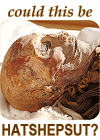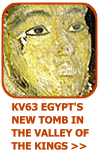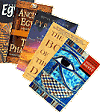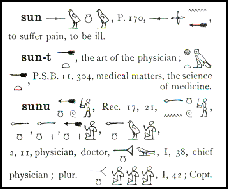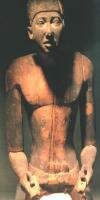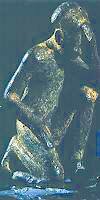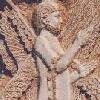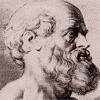|
|
||||||||||||||||||||||||||
|
|
Pages in this article: [ MEDICINE ] The physician in Ancient Egypt From earliest times, the Egyptians practised the art of healing. The ancient word for doctor or physician was "swnw", pronounced today as "soonoo" from the root word "swn" meaning to suffer pain.
The Edwin Smith Papyrus is a 4.5m long papyrus named after the Egyptologist who bought the document in 1826. Translated in 1923 by Professor J Breasted, it is a medical treatise concerning pathology and bone surgery. Not only does it describe fourty-eight known conditions and their treatments, it also describes three categories for a physician. Beginning with the "swnw", "Doctor of the People", followed by the "wabw", "The Pure" or "Those who are ceremonially pure", and finally the "saw", "The Guardian". We know from records that the Ancient Egyptians adopted a hierarchy system reminiscent of today’s health service:
There is only one attested title for a female doctor, Pesehet, of the 4th dynasty who held the title "imy-rt-swnt" meaning "lady director of lady physicians". All of these professions were ably assisted by nurses and wound dressers. A doctor for all ills
The status of the Egyptian doctor
The "swnw" - doctor of the people The "swnw" - doctor of the people, which also included basic dentistry, was the lowest of the medical stratum. He would derive his knowledge and information from books and gain experience, relying on the findings of palace physicians and dentists as the source of his knowledge. His reputation was gained by a system of trial and error. Other duties for the "swnw" would be to provide health and beauty treatments such as skin creams, ointments and hair dyes. He was also expected to act as a veterinary surgeon and pest control officer, ridding houses of fleas, lice, rats and all manner of infestations. Although the medical profession consisted of a hierarchical system, nowhere is it attested that "junior doctors" the "swnw", were able to attain promotion to the rank of "wabw". This suggests that like all other trades throughout ancient Egypt, the position was probably hereditary. The "wabw" The name was probably pronounced "waboo" meaning "the pure". The Ebers Papyrus, the oldest known scientific treatise known to man, contains cases studies on anatomy and seven hundred formulae for making medicines. It describes a position known as the "wab-Sekhmet" meaning "pure of the goddess Sekhmet". Due to their higher status, these physicians treated the more privileged in society. Apart from administering medicines, the "wabw" also incorporated the use of religious rites as part of their practice. They would give invocations to the god Thoth, the god of wisdom and to Sekhmet, whose son Imhotep was believed to be the inventor of medicine. The "Saw" The elite of physicians, pronounced "saoo" meaning "guardian", which probably derived from "sa" meaning "to protect, to watch over, or to take care of". As one would expect, it was the "saw" that treated the elite of society. A "saw" was generally educated and trained within the temple palace schools called "peri-ankh", the "Temples of Life", namely those of Heliopolis and Sais. Here they would undergo a formal apprenticeship under an acknowledged master. The "saw" would incorporate the techniques and practices used by the "wabw" with the added potency of magic and sorcery. Engaging in a battle with the invisible powers causing an unknown illness (usually depicted as a scorpion attacking a human being), one of his titles was "those who master the scorpions". The highest position attainable would have been "Great of the Palace Doctors". Not only did he treat the pharaoh but was also responsible for the medical care of the country, as a sort of "Health Minister".
|
|||||||||||||||||||||||||

|
||||||||||||||||||||||||||
|
||||||||||||||||||||||||||



